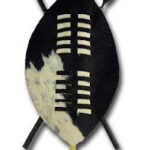Walt Whitman’s “Song of Myself” is not just a poem; it’s an anthem to individuality and a profound exploration of what it means to be human. At its heart lies the concept of finding your own “Song With Myself,” a journey into the depths of personal experience and universal connection. This exploration invites us to celebrate the self, embrace the world, and discover the inherent harmony within and around us. Whitman’s verses resonate with a timeless message: the journey to understand oneself is intrinsically linked to understanding the world.
In the opening sections of “Song of Myself,” Whitman immediately establishes a tone of self-celebration and radical acceptance. “I celebrate myself, and sing myself,” he declares, setting the stage for an intimate and expansive exploration. This isn’t narcissism, but rather a recognition of the inherent worth and beauty of the individual. He extends this celebration outwards, stating, “For every atom belonging to me as good belongs to you.” This line is pivotal, suggesting a fundamental interconnectedness. The ‘song with myself’ becomes a song for all, a shared human experience. Whitman emphasizes the physical and sensory experience of being, grounding his philosophy in the tangible world. He speaks of loafing, observing nature, and the very atoms of his being formed from the soil and air. This grounding in the physical is crucial; it’s from this embodied self that the ‘song’ arises.
Whitman delves into sensory experiences to deepen this ‘song with myself’. He revels in the olfactory richness of perfumes yet contrasts it with the odorless, life-sustaining atmosphere, choosing the latter as his true love. “The atmosphere is not a perfume, it has no taste of the distillation, it is odorless, It is for my mouth forever, I am in love with it.” This preference for the natural, the unadulterated, speaks volumes. He extends this sensory appreciation to the sounds of breath, echoes, whispers, and the sights and smells of nature – leaves, sea-rocks, and hay. This immersion in sensory details is not mere description; it’s a pathway to deeper self-awareness. The ‘song with myself’ is composed of these sensory notes, the everyday miracles we often overlook. He broadens the scope to include human connection – kisses, embraces, the delight of solitude and the rush of streets, culminating in “the song of me rising from bed and meeting the sun.” This highlights the continuous, ever-present nature of this inner ‘song’.
The poem challenges conventional notions of learning and understanding. Whitman questions the value placed on traditional knowledge acquisition: “Have you practis’d so long to learn to read? Have you felt so proud to get at the meaning of poems?” He proposes a different path to knowledge – direct experience and personal insight. “Stop this day and night with me and you shall possess the origin of all poems.” This is an invitation to find the ‘song with myself’ not in books or doctrines, but within lived experience. He urges listeners to filter information through their own selves, advocating for independent thought and personal validation. “You shall listen to all sides and filter them from your self,” he advises, emphasizing self-reliance in forming one’s own ‘song’.
Further sections of “Song of Myself” explore themes of time, existence, and the eternal now. Whitman rejects the linear concept of beginning and end, asserting, “There was never any more inception than there is now, Nor any more youth or age than there is now.” This perspective shifts the focus to the present moment, the ‘now’ where the ‘song with myself’ truly exists. He speaks of the constant “urge” of the world, the continuous flow of life and creation. This ongoing process is integral to the ‘song’ – it’s not a static melody but a dynamic, evolving expression of being. He embraces both the seen and unseen, the known and unknown aspects of existence, finding harmony in the totality. “Clear and sweet is my soul, and clear and sweet is all that is not my soul.” This acceptance of self and non-self, the internal and external, enriches the ‘song with myself’.
Whitman confronts the complexities of human experience, including the external world and societal interactions. He acknowledges the “trippers and askers” and the myriad influences that shape us – environment, society, news, relationships, and personal circumstances. “These come to me days and nights and go from me again, But they are not the Me myself.” Crucially, he distinguishes between these external influences and the core self. The ‘song with myself’ is not defined by these fleeting external factors, but by something deeper and more constant. He describes this core self as “amused, complacent, compassionating, idle, unitary,” observing the world with curiosity and detachment. This ability to stand apart, to witness, is essential for tuning into the authentic ‘song within’.
In a deeply personal section, Whitman addresses his soul, reinforcing the theme of inner dialogue and self-acceptance. “I believe in you my soul, the other I am must not abase itself to you.” This speaks to the internal relationship, the conversation within the self that forms the essence of the ‘song with myself’. He seeks a connection beyond words or conventions, desiring “only the lull I like, the hum of your valv’d voice.” This intimate communion with the soul is portrayed through sensual and tender imagery, emphasizing a deep, almost sacred union within the self. This union brings peace and knowledge that transcends earthly arguments, highlighting the profound wisdom found in the ‘song with myself’.
Finally, Whitman contemplates the cycle of life and death through the simple image of grass. A child’s innocent question, “What is the grass?” prompts a series of reflections on nature, life, and mortality. He sees the grass as a symbol of continuity, of life springing forth from death. “The smallest sprout shows there is really no death.” This cyclical view of life is comforting and liberating. The ‘song with myself’ thus becomes a song of eternal life, a celebration of the ongoing cycle of existence. He concludes with a powerful affirmation of life’s continuation, stating, “All goes onward and outward, nothing collapses, And to die is different from what any one supposed, and luckier.” This final thought encapsulates the overarching message: the ‘song with myself’ is a song of life, resilience, and eternal becoming.
“Song of Myself” by Walt Whitman is an enduring invitation to embark on a journey of self-discovery. Finding your ‘song with myself’ is not about isolating oneself, but about deeply connecting with your own being and, through that connection, understanding your place in the vast tapestry of existence. It’s about celebrating individuality while recognizing universal unity, embracing sensory experience, and finding profound meaning in the everyday. Whitman’s poem encourages each of us to listen to our inner voice, to celebrate our unique ‘song’, and to recognize that this personal song is an integral part of the larger song of humanity and the cosmos.


